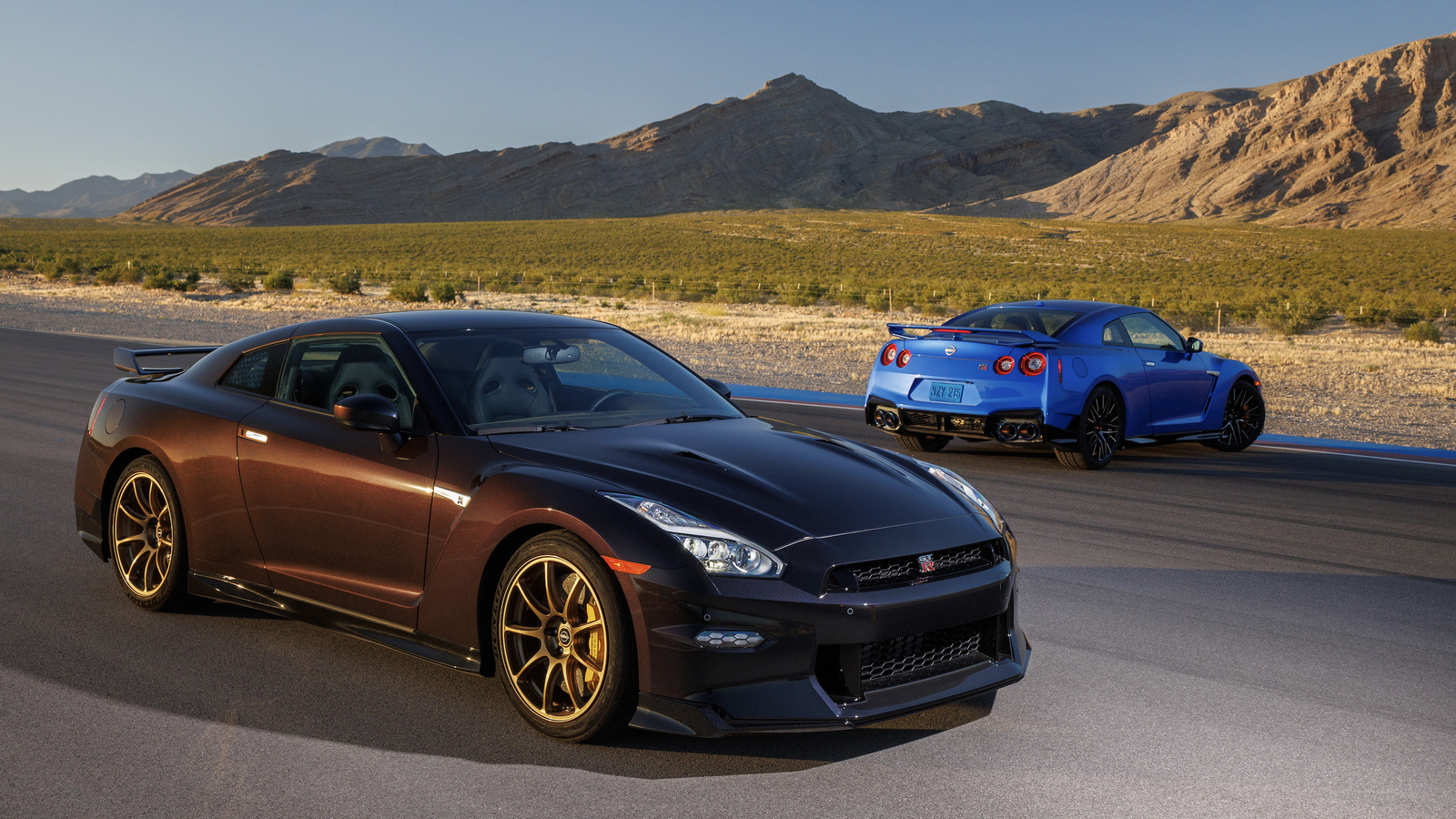
Nissan recently confirmed the end of production for the R35 GT-R, a car that’s almost old enough to vote. That’s right, 17 years after it was introduced, the GT-R is on its way out. Unfortunately, in its release regarding the “sunset” of the GT-R, Nissan didn’t cite specific reasons for the discontinuation. So, we’re left to speculate, taking a few educated guesses as to why the GT-R is dying, and mourning its loss along the way.
The 2024 GT-R is still special, and it still offers a thrilling driving experience — it’s powerful and precise — but it has aged considerably over the years, and it’s become much more expensive. When the R35 GT-R first became a reality in America, it was powered by a twin-turbocharged V6 known as the VR38DETT. It produced 473 horsepower and started at around $70,000. Nissan has added updates to the styling, suspension hardware, and tech over the years, but fundamentally, it’s the same car underneath.
The VR38DETT still powers the GT-R today, and it makes considerably more power — as much as 600 horsepower in some models — but prices are up too, with some GT-R models selling for well over $200,000. That price increase, along with the lack of a significant redesign over the last 17 years, has led to decreased sales in recent years. Combine the low sales with increasing fuel economy standards across the automotive industry, and the picture becomes a bit clearer.
What comes next?
Nissan’s latest press release regarding the GT-R uses somewhat cryptic language, with a subheading in the last paragraph that says “Sunsets always come before a new dawn approaches.” The release goes on to briefly mention the GT-R’s legacy, then pivots to Nissan’s focus on the future and the next era of performance. Maybe it’s just hopeful language about new products, but it could be alluding to something else. Is the new dawn approaching a reference to a new generation of GT-R? Perhaps an R36?
While it’s possible that could be referencing a future GT-R (and Skyline enthusiasts would love to see a new take on the evolution of the GT-R) there’s no way to be certain. Nissan hasn’t released any details on whether or not an R36 GT-R will exist, or what it will look like if it becomes a reality, so it’s all a guessing game from here. Using the tried-and-true VR38DETT engine seems like it would be out of the question after years of service, but a serious update to the twin-turbo V6 could give it a new lease on life. The potential for a hybrid model certainly exists and would help the GT-R meet modern fuel economy standards while also competing with cars like the Corvette E-Ray.
Sending the GT-R off in style
Nissan has announced the GT-R’s departure, but it isn’t gone yet. There are two final editions of the R35 GT-R available: the T-spec Takumi Edition and the Skyline Edition – priced at $151,090 and $131,090 (plus destination) respectively. These models are limited to less than 200 units, and they each pay tribute to the legacy of the GT-R in unique ways. The term Takumi refers to the four master craftsmen who hand-build every GT-R engine. These four engine builders make every GT-R engine, then mount a plaque with their name on each engine before it leaves the shop.
The Takumi Edition GT-R features special red-etched writing of those names and a gold VIN plate in the engine bay. The Takumi will feature Midnight Purple paint and a Mori Green interior. Like the T-Spec GT-R it’s based on, the Takumi gets carbon ceramic brakes and forged RAYS wheels.
The Skyline Edition pays tribute to the GT-R’s Japanese name — Skyline. Based on the GT-R’s premium trim level, it comes with Bayside Blue exterior paint (a popular color from the R34 GT-R) and a Sora Blue interior. Both the Takumi and the Skyline Edition use the standard version of the GT-R’s 3.8-liter twin-turbocharged V6 that produces 565 horsepower and 467 lb-ft of torque. If you’re looking to get more power out of your GT-R, the NISMO edition is rated at 600 hp and 481 lb-ft of torque – but it’s got an eye-watering starting price of $221,090.




